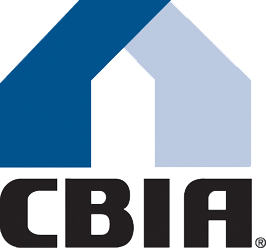Photo by Ewa Stepkowska on Unsplash
by Phillip B. Burum, Executive Vice President, Diversified Pacific,
President, Building Industry Association (BIA) Baldy View Chapter
Our hearts remain heavy for those affected by the devastating wildfires throughout our state last month - the results of which have Californians perplexed on whether or not we should be rooting for heavy rains this winter. On the one hand, those in our region are always hopeful and in need of more rainfall. On the other, the negative impacts of severe weather can bring even further distress in the form of flooding or mudslides to the areas already so horribly impacted. For reasons such as this, weather, and water resources in general, will always be part of the ‘water cooler’ conversations in Southern California.
According to a recent forecast from the National Oceanic and Atmospheric Administration (NOAA), there is a 70-75 percent probability that Southern California will experience another El Niño event this winter. The report indicates, however, that even if we are entering an El Niño year, it is expected to be a weak event resulting in average or less than average annual rainfall. It all seems to say, ‘your guess is as good as mine.’ We cannot affect, count on, or even reliably predict long term weather patterns, but we can control the amount of water we use and how we use it.
Today, Inland Empire homebuilders employ the most sophisticated design techniques in order to conserve this invaluable resource. Homes built today include water saving features inside and outside of the home and these cost saving additions, which can be substantial, should not be overlooked when you are planning your next home purchase and caught in a decision between new or resale.
Landscape architects are better educated and follow stricter guidelines than ever before as they plan the outdoor aesthetic of your home and neighborhood. By designing landscaped areas that include drought tolerant materials, low flow drip irrigation and hardscape, for example, today’s new homes use an average of 50 percent less water than homes built only 20 years ago.
Water smart landscaping is not exclusive to new homes as every homeowner has the opportunity to follow these guidelines and modify their existing landscaping to meet modern standards. Homeowners can enhance existing landscaping by consulting their local nursery or home & garden center for suggestions on the best types of trees and shrubs that will thrive in their specific environment. Because many communities encourage the planting of certain types of native species, local nurseries are generally very knowledgeable on the subject. Likewise, homeowners associations (HOAs) often provide landscape design guidelines including approved plants and trees.
The right landscaping can beautify, insulate and protect the home; enhance its ‘curb appeal’ and save homeowners money by reducing energy and water costs. So, before the winter rains begin in earnest, a good place to start preparing your home for the winter months and spring landscaping season is to visit your local water provider’s website and see all they have to offer.
Then visit www.bewaterwise.com, a website of the Metropolitan Water District of Southern California and the family of Southern California water agencies. The website offers great tips on how to save money and water by using irrigation systems more efficiently utilizing a Watering Calculator that creates a customized watering schedule to manage an automatic timer; or a Watering Index which is a scientifically-based figure that will guide a watering schedule according to changes in the weather.
The right landscaping can add further savings by insulating and protecting homes from the elements, which is particularly important this time of year. Planting deciduous trees (trees that lose their leaves during the winter) in front of windows that receive significant amounts of sunlight will block solar heat in the summer while letting it in during the winter when it is needed most. As with any home improvement project, even for the most sophisticated ‘do-it-yourselfer’, consult with a professional for tips on how and what to install to get the best results for your specific situation.
For more information about water-, energy- and resource – efficient landscaping, visit the American Nursery & Landscape Association at www.ANLA.org or The National Arbor Day Foundation which was recently incorporated into AmericanHort at www.americanhort.org on the Internet. For further reading on home improvements that will beautify and enhance the value of your home, visit our website at www.BIABuild.com on the web.
*****

































